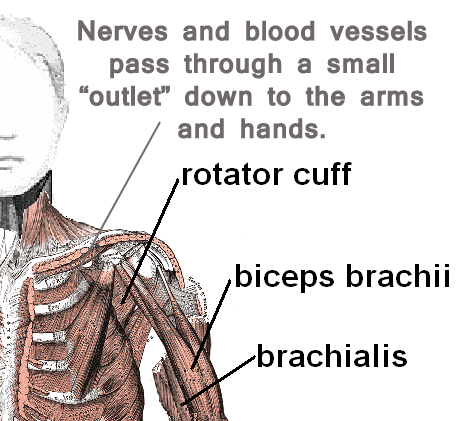Thoracic Outlet Syndrome – TOS
Recently, I have had 3 physical therapy patients in the clinic with a complicated clinical presentation. All 3 patients have a different cluster of symptoms and impairments. What they each have in common is that they have upper extremity symptoms that are not of cervical spine (radiculopathy) origin. Instead, their pathology is a result of tight chest and neck musculature, compressing the bundle of nerves that control the movement and sensation of the arm. Clinically, this is known as Thoracic Outlet Syndrome, or, TOS.
What is Thoracic Outlet Syndrome?
- Compression of the artery, vein and/or nerves that pass through the thoracic outlet.
- There are 3 possible locations for the compression to occur:
- In between your scalene (neck muscles)
- In between the clavicle and first rib
- Under the peck minor (chest muscle)
Physical Therapy Treatment for TOS
- Physical therapy is the first line of treatment for Thoracic Outlet Syndrome (TOS).
- A therapist will teach you how to stretch what needs to be lengthened as well as how to strengthen muscles that will improve posture.
- Physical therapists also have manual techniques to help you progress your treatment
- Most people diagnosed with TOS have a good prognosis and will have complete resolution of symptoms with conservative treatment only.

